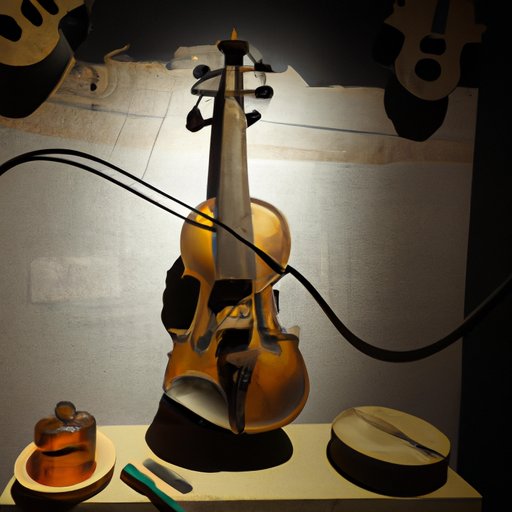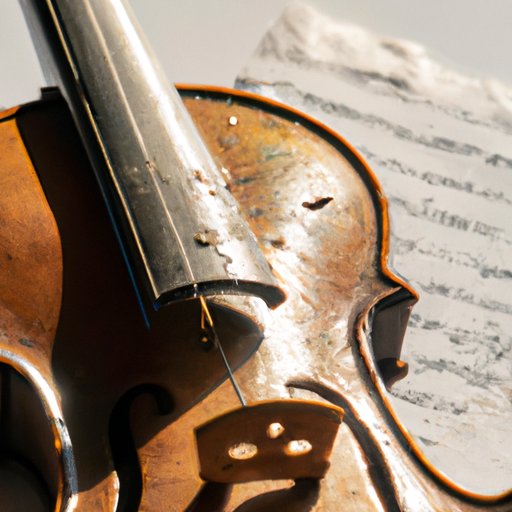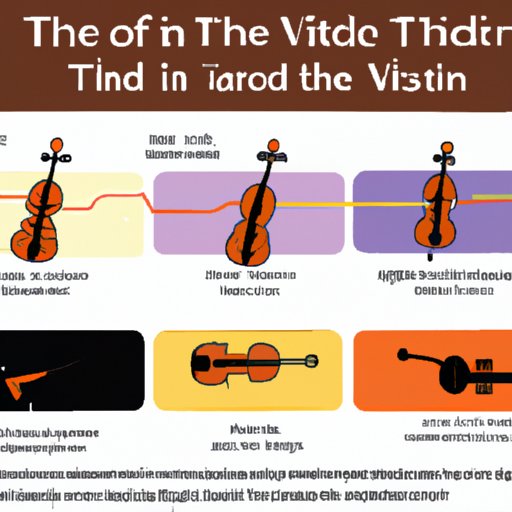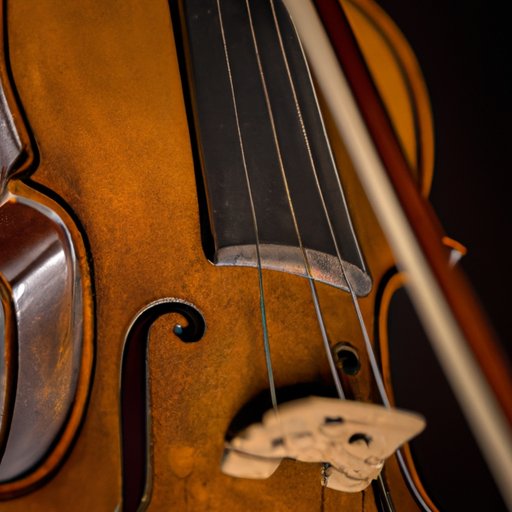Introduction
The violin is one of the most beloved stringed instruments in the world. It has a long and rich history, with its invention dating back centuries ago. Its popularity in classical, jazz, and pop music has made it an iconic instrument of both amateur and professional musicians alike. But when was the violin first invented? How did it evolve over time? Let’s explore the origins of this timeless instrument.
What is the Violin?
The violin is a bowed string instrument that typically has four strings tuned in perfect fifths. It is held between the left shoulder and chin and is played by drawing a bow across the strings. The sound produced by the violin can vary depending on the type of bow used, the tension of the strings, and the type of wood used to make the instrument. The violin is most commonly used in classical music but can also be heard in folk, jazz, and pop genres.
Why is the Invention of the Violin Important?
The invention of the violin has had a major impact on the development of music. It has been used in countless musical works throughout history, from classical symphonies to modern pop songs. The violin is also often seen as a symbol of culture and sophistication. It is a versatile instrument that can be used for solo performances or in ensembles. Its unique sound and ability to convey emotion have made it a favorite among composers and performers alike.

A Historical Look at the Invention of the Violin
The exact date of the invention of the violin is unknown, but historians believe it originated in northern Italy during the 16th century. It is believed to have evolved from earlier string instruments such as the lira da braccio and the rebec. These earlier instruments were played with a bow, similar to the way the violin is played today.
How Violins Evolved Through Time
The earliest violins were quite different from the modern-day version. They were much smaller and had only three strings. Over time, the size of the instrument increased, and more strings were added. Different techniques were also developed to improve the sound quality of the violin. By the 18th century, the modern-day violin had taken shape and become a popular instrument in Europe and beyond.

The Impact of the Violin on Music History
The violin has had a profound influence on music history. Its range and versatility have allowed it to be used in a variety of musical styles and genres. Its unique sound has inspired some of the greatest composers of all time, including Bach, Mozart, Beethoven, and Tchaikovsky. The violin has also been used in folk music, jazz, and pop music, making it a truly universal instrument.
Exploring the Development of the Violin
Over the centuries, the violin has undergone many changes and innovations. Different types of violins have been developed, such as the electric violin and the acoustic-electric hybrid. Major advancements in technology have also led to improvements in the design of the instrument. For example, new materials such as carbon fiber are being used to make violins lighter and more durable.
Different Types of Violins
There are several types of violins available today. Each type has its own unique sound and characteristics. Traditional violins are made from wood, while electric violins are made from synthetic materials. Acoustic-electric hybrids combine the acoustic sound of a traditional violin with the electric capabilities of an electric violin. Other types of violins include baroque and modern violins.
Major Innovations and Inventions
Over the years, there have been several major innovations and inventions related to the violin. One of the most significant advances was the introduction of the chin rest in the 19th century. This device allowed violinists to hold the instrument comfortably while playing. In the 20th century, the use of electronics in the violin became more commonplace, allowing for a wider range of sounds and effects.

A Timeline of the Invention of the Violin
To better understand the evolution of the violin, let’s take a look at a timeline of its invention and development.
Early String Instruments
The earliest string instruments date back to ancient times. Examples include the lyre and the harp. These instruments were played with a bow, similar to the way the violin is played today.
16th-17th Century Developments
In the 16th and 17th centuries, early versions of the violin began to appear in northern Italy. These instruments had three strings and were much smaller than modern-day violins. During this period, the size of the violin increased, and more strings were added.
18th Century Changes
In the 18th century, the modern-day violin took shape. Innovations such as the chin rest and improved bow designs allowed for greater comfort and control while playing. Different types of violins, such as the baroque violin, were developed during this period.
19th-20th Century Innovations
In the 19th and 20th centuries, the use of electronics in the violin became more widespread. This allowed for a wider range of sounds and effects. New materials, such as carbon fiber, were used to make violins lighter and more durable. Electric violins were also developed during this period.
Conclusion
The violin is one of the oldest and most beloved instruments in the world. Its invention dates back centuries ago, and it has gone through many changes and innovations throughout its history. The violin has had a major impact on the development of music, inspiring some of the greatest composers of all time. From its earliest string instruments to its modern-day developments, the violin continues to be a timeless instrument enjoyed by musicians around the world.
(Note: Is this article not meeting your expectations? Do you have knowledge or insights to share? Unlock new opportunities and expand your reach by joining our authors team. Click Registration to join us and share your expertise with our readers.)
